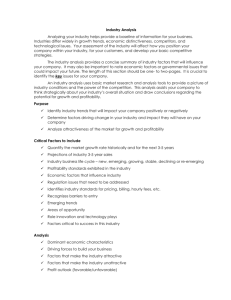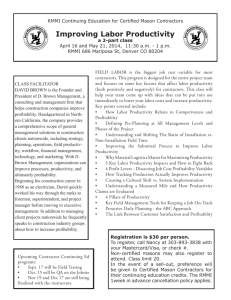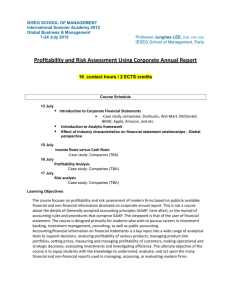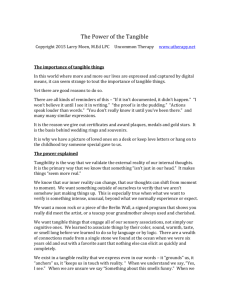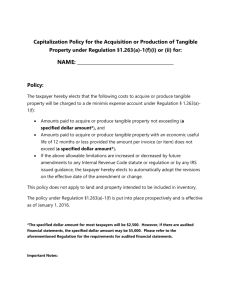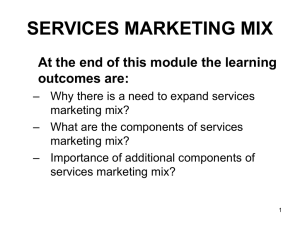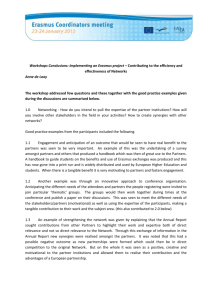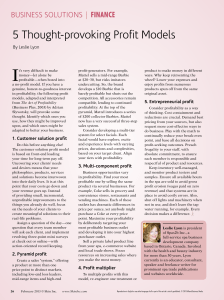click here to productivity models
advertisement
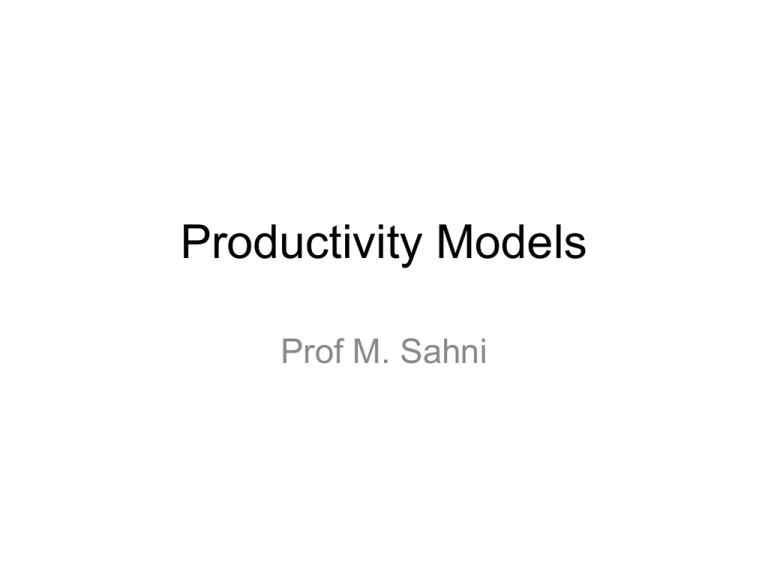
Productivity Models Prof M. Sahni A definition of productivity will have three broad categorizations: • the technological concept: the relationship between ratios of output to the inputs used in its production; • the engineering concept: the relationship between the actual and the potential output of a process; and • the economist concept: the efficiency of resource allocation. For three reasons, productivity is difficult to deal with: • outputs are often measured in physical terms such as units, tonnes, kilowatts, or value. However the inputs are usually physically different and include measures of people (numbers, skills, hours worked or costs) or materials (tonnes and costs). • the ratio by itself tells us little about performance. A ratio of 0.75 is of little value unless it is compared with previous time periods, or a benchmark, or the potential productivity of the operation. • many different ratios can be used (both financial and nonfinancial). Models can differ in – • fixed and adjustable. • describe Production Function or not. • calculation order of the variables may differ. • theoretical framework of the model can be either cost theory or production theory. • a model may use any three accounting techniques - ratio accounting, variance accounting and accounting form. • one can analyse these models horizontally or vertically Based on the variables used: • Productivity index models • PPPV models Profitability = f (Productivity, Prices, Volume) • PPPR models Profitability = f (Productivity, Price Recovery) Productivity index models – do not measure production function; original – Davis; Kendrick & Creamer, Craig & Harris, Hines, Mundel, Sumanth. Craig and Harris formulaTotal Factor Productivity= Total output (sales, inventory, etc in money units) Total input (labour+capital+energy+material+other expenses) Total Productivity= Total tangible output Total tangible input Total tangible output = Value of finished units produced + Value of partial units produced + Dividends from securities + Interest from bonds + other income Total tangible input = Value of (human + material + capital + energy + other expense) Total Productivity Index (TPI) = TFP1/TFP0 PPPV models Profitability = f (Productivity, Prices, Volume) (Kurosawa; Courbois & Temple; Saari; Gollop) PPPR is the abbreviation for the following function (can not describe the production function): Profitability = f (Productivity, Price Recovery) APQCs Multifactor Productivity Measurements Model (MFPMM) model is a five-step model, focusing on productivity metrics per full time equivalent (FTE) or Rupee spent: Gold’s Model Gold (1980) proposed a financial-ratio approach to productivity measurement. His measure focuses on the rate of return on investment, and it attributes profit sense to five specific elements of performances: product prices, unit costs, utilization of facilities, productivity of facilities, and allocation of capital resources between fixed and working capital. He combines these five elements in the following equation in order to measure the productivity of a company by the rate of return on its invested capital.



